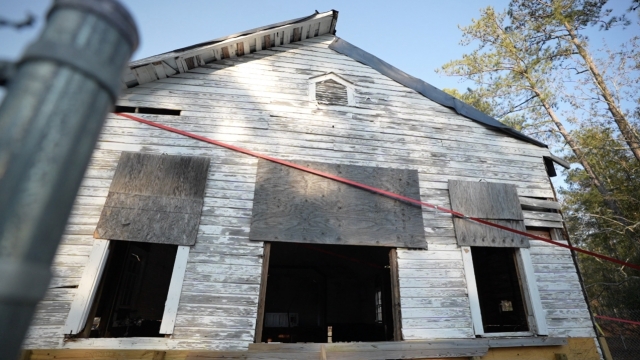Buildings are knocked down every day to make way for new construction.
But in one North Carolina community, people are coming together to rebuild an old chapel to preserve and honor its history.
If you look past the cobwebs and chipped paint, this building has a story to tell.
"Reaves Chapel is located on the banks of Cape Fear River, and we're estimating that it was built by former enslaved African Americans on the Cedar Hill Plantation right around the 1850s, 1860s," Al Beatty, the president of the Cedar Hill/West Bank Heritage Foundation, said.
It was moved to the lot it sits on now in the early 1900s, just outside Wilmington, North Carolina.
"It became active and stayed active until roughly 2005," Beatty said. "The church was deteriorating pretty rapidly."
Beatty has been visiting this building most of his life.
"Around 1955, 1956 somewhere in that time frame," he explained. "I grew up in the community here. I can walk to the church from my house."
So he decided to create the Cedar Hill/West Bank Heritage Foundation to restore it.
With the help of partner organizations and fundraising, renovations started about three months ago.
They are trying to preserve every part possible, including the original bell which currently sits in storage.
"Historic preservation is important for a variety of reasons," Travis Gilbert, executive director of the Historic Wilmington Foundation, said. "First of all, when you preserve the built history of a community it grounds your community, to give your community a sense of place, a sense of identity, of uniqueness."
The nonprofit provides resources in the community to preserve the area's history.
It has also played a role in restoring Reaves Chapel.
"Our region has lacked the preservation and interpretation of Black historic sites, and the preservation of Reaves Chapel is one of many efforts to bring that history back to the forefront of our shared experience," Gilbert explained.
"This particular structure is at the northern range of the Gullah Geechee Cultural Heritage Corridor, which is a national park service corridor identified specifically because of the culture of the descendants of the people, the Gullah Geechee, from West Africa that was brought over specifically for their knowledge of rice cultivation," Jesica Blake, associate director of the North Carolina Coastal Land Trust, said.
The land trust has partnered with Beatty's foundation for the past six years to help buy and preserve the chapel.
"It's American history that hasn't been told really well and this structure is a piece of that history," Blake said.
"It's the oldest building, African American structure in this area. You have to realize after slavery because of the laws and because of Jim Crow, African Americans weren't allowed to socialize at a lot of other public places, so churches and schools were very instrumental," Beatty said.
He said the project sends a message about preserving this piece of the past.
"It's not being wiped out as other histories in the country had been," he said.
The plan is for the building to be finished by the end of the year.
While it may never hold services again, Beatty and Blake hope it will be accepted by the state as a historical site, with the original bell and all.
"This was our venue for outside letting us know there was a bigger world than just here," Beatty said.
Alex Livingston at Newsy and KMGH's Chloe Nordquist first reported this story.




